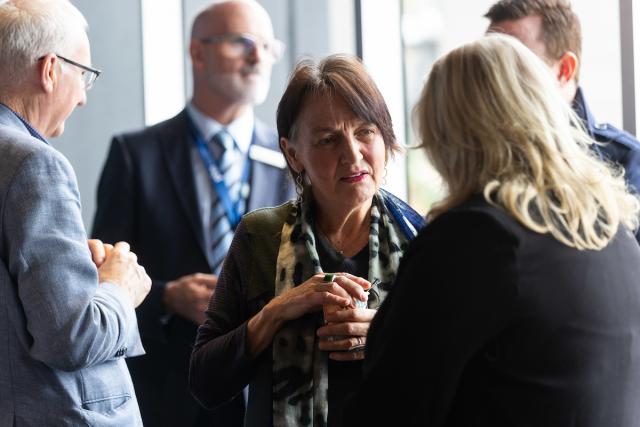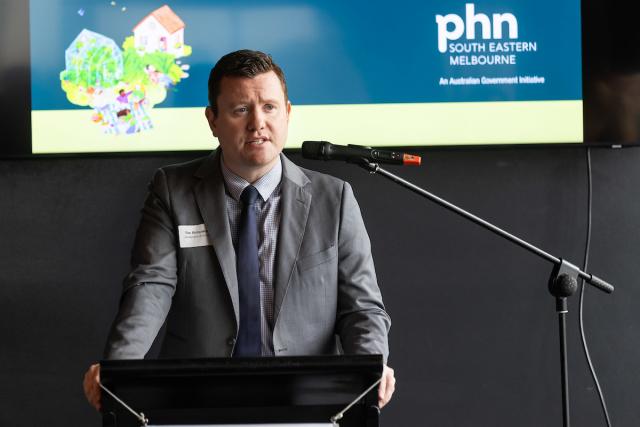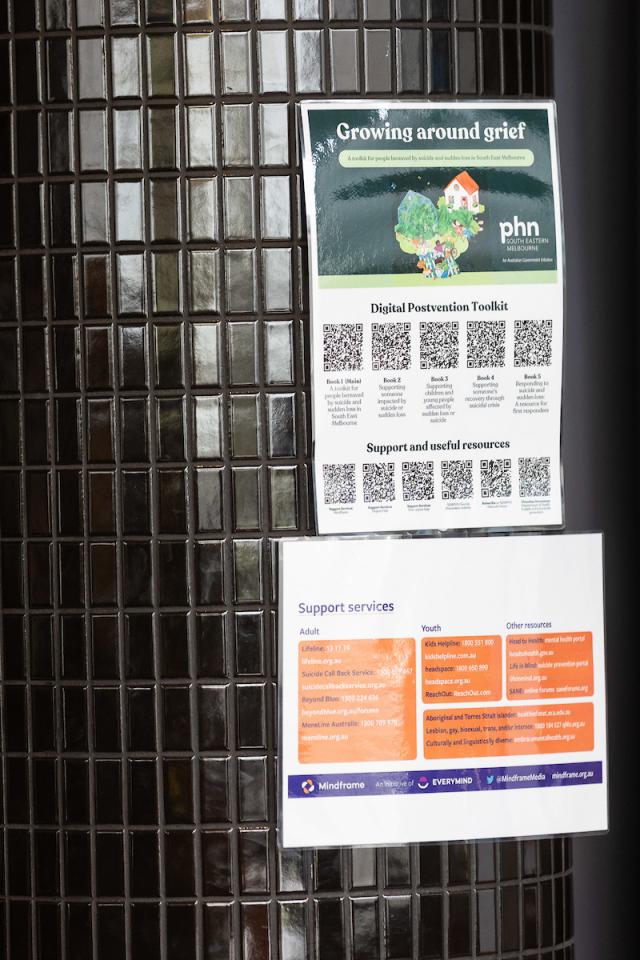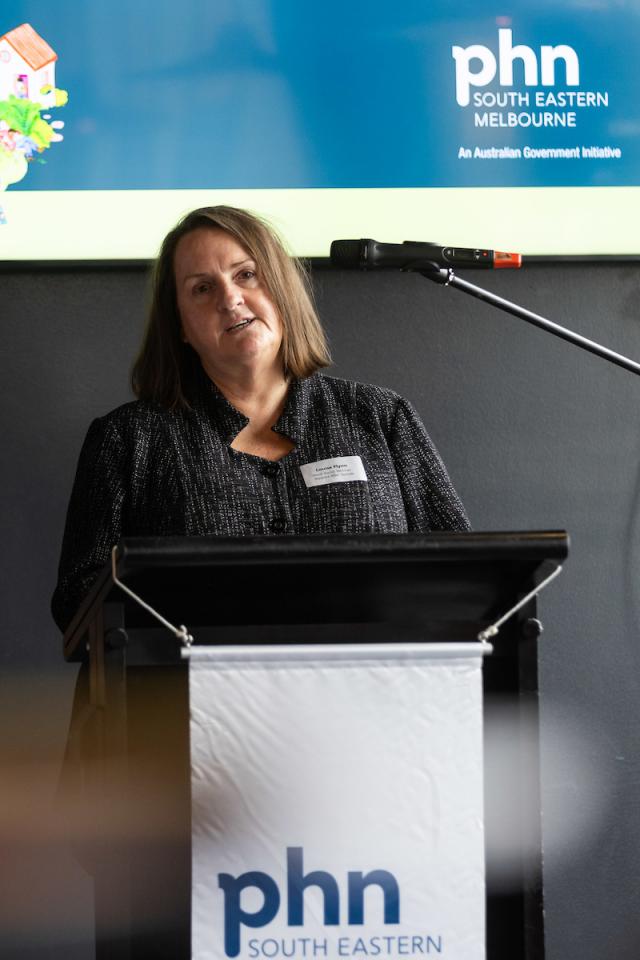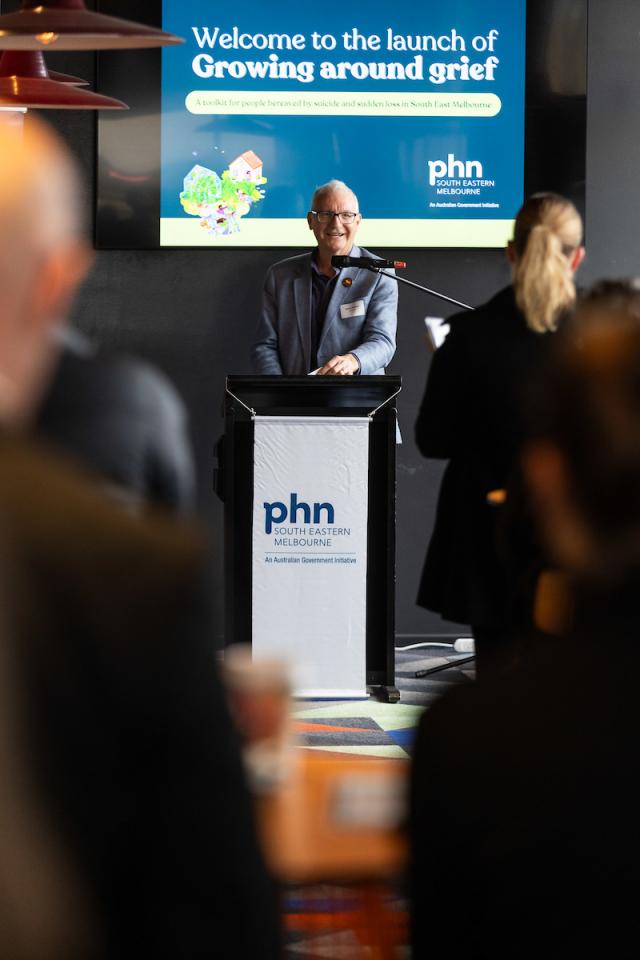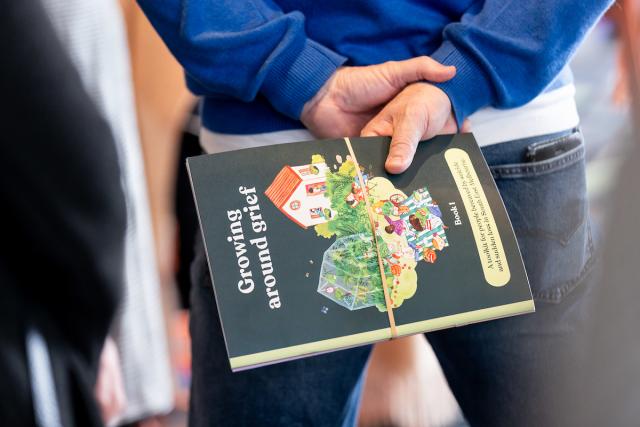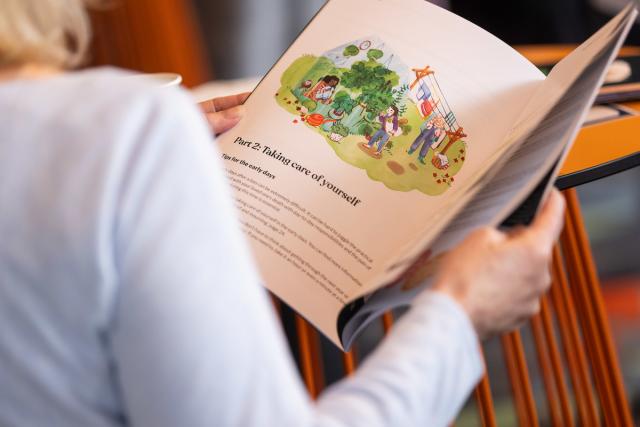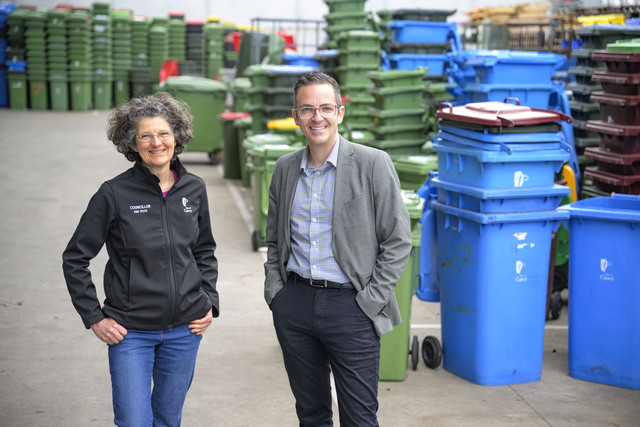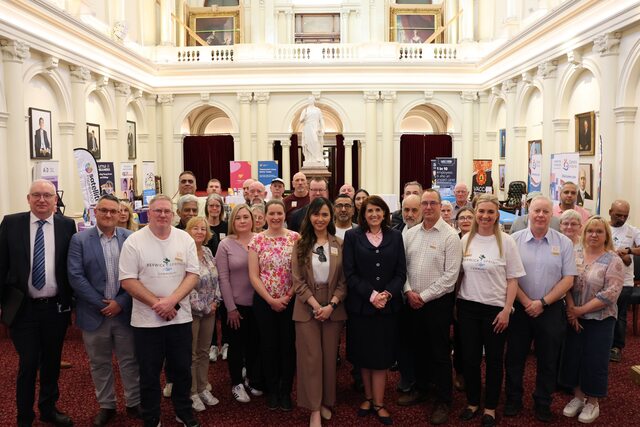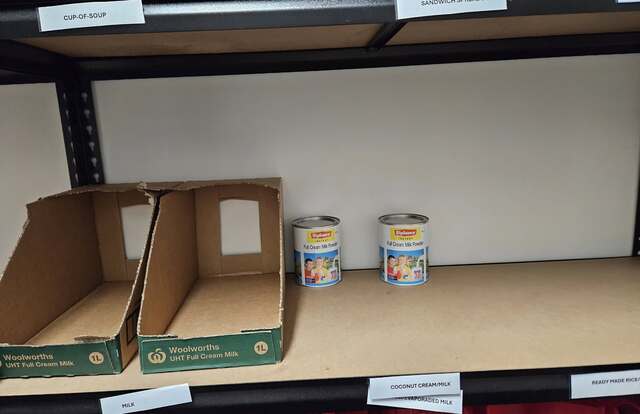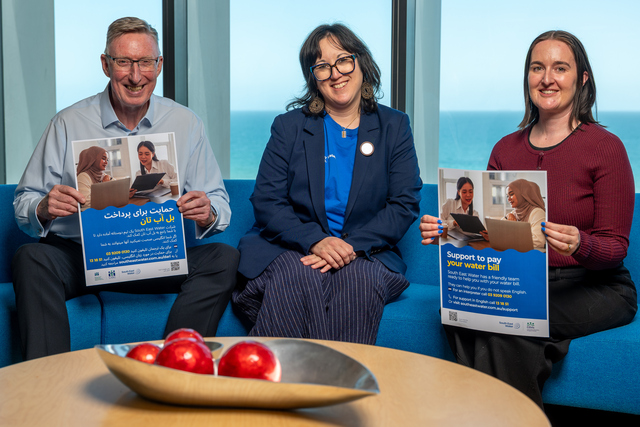A ground-breaking, free tool kit clearly shows how people bereaved by suicide can “get good help” and how others can “give good help” in the South East.
Author and lived-experience advocate Su-Rose McIntyre told the 4 July launch that she wished the Growing Around Grief kit existed when she lost her son Carl to suicide 14 years ago.
“So alone” in her grief, McIntyre felt like she was “space walking” and that a “huge hole” was gouged out of her and her universe.
She had no idea where to turn for help. Her local library had just one “unhelpful” and “triggering” book on the topic.
Things had since improved, McIntyre said. There was more talk about anxiety, depression, existential crisis, isolation, worthlessness, suicidal ideation and suicidal loss.
“This strangely is a good thing. This is being real.”
Yet suicide is still an “embarrassing” and “uncomfortable” topic talked about in “hushed tones”.
And while it gets little attention, death by suicide in Australia doubles the road toll.
And Melbourne’s South East has the second-highest suicide rate in the country.
The Growing Around Grief resource was produced by South Eastern Melbourne Primary Health Network (SEMPHN) in collaboration with Jesuit Social Services, Youth Support and Advocacy Service (YSAS) and people with lived experience.
It is downloadable online for free.
And it’s organised in clear, easy-to-read sections on helping children, young people, first responders, veterans, Aboriginal and Torres Strait Islanders, culturally or linguistically diverse background and LGBTQIA+SB communities.
McIntyre said it was vital to “shine a light” on grief, particularly for suicide. The kit needed to be shared in schools, businesses, factories, Mens Sheds and homes.
“This kit holds everything I wish I had access to 14 years ago.
“We need to know how to get good help and how to give good help.”
Jesuit Social Services general manager Louise Flynn said the kit “sends a message that there are people that understand and that there are people that care”.
“It also sends a message that life isn’t over, however much it feels it is. That it is possible to live meaningfully after such a tragedy.”
Flynn heads the JSS’s ‘Support After Suicide’ program that has been running for almost two decades.
She detailed how tragedy can “leave deep wounds that derail a person’s life” and how compassionate, timely support was vital.
She told of how 20 years ago, a woman at just 19 lost her sister to suicide and had no supports.
Her life suffered as a result – she couldn’t hold onto a job or maintain relationships. She became a regular drug user.
“One of the most potentially harmful impacts is how it can leave someone feeling and thinking about themselves.
“It can leave a deep sense of failure, of having failed the one who died … of not having loved enough or of being unloveable.”
Flynn said at the heart of suicide grief response was about restoring a sense of self and self-worth, rebuilding relationships and connection with communities.
“Losing a loved one to suicide tends to be a life changing and life defining experience. Life is shaped by the tragedy from that moment – it’s immediate.
“Who I was before and who I am now feels completely different. Who I was before feels out of reach. Life as it was before feels gone – it’s like it has vanished.”
The address book changes from that point, Ms Flynn said. People remove themselves from a bereaved person or a family and so lives “immeasurably change”.
“Perhaps because they don’t know what to say, they don’t know how to be with someone at that level of suffering and being so close to such a tragedy is more than they can bear.”
‘Growing Around Grief’ acknowledges the loss is always felt, it’s always real and the person lost continues to be loved.
But also that people can lead satisfying and fulfilling lives again, and not just surviving, Flynn said.
They gained some “hard won” changes including increased compassion and empathy.
South Eastern Melbourne Primary Health Network chief executive Quinn Pawson said “wise counsel”, “deep insights” and “lived experience” were deeply embedded in the kit.
It was designed to be accessible for those struggling to find support.
“There is a lot of work to be done in our schools, among our family and friends, in our workplaces, with our children and grandchildren, with members of our faith communities, sport communities and art communities.
“This kit is for us to share with those we love, with those we share work with, with those we play with, with those we care about.”
Growing Around Grief was based on research gathered in State-funded place-based suicide prevention trials between 2016-’22.
Mental Health and Suicide Prevention Parliamentary Secretary Tim Richardson noted that those bereaved from suicide were at greater risk themselves.
That’s why postvention was recognised as so important in the recent Royal Commission into Mental Health, he said.
Richardson said the State Government was set to release its Suicide Prevention Strategy after 240 public submissions, noting one in two people lost to suicide had never interacted with a mental health and well-being service.
“That’s the stigmatism in our community… We have a lot of work to do.”
The ‘Growing Around Grief’ booklet is at semphn.org.au/growing-around-grief
Lifeline 13 11 14, 24/7

